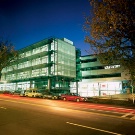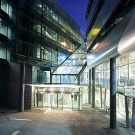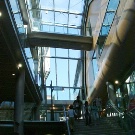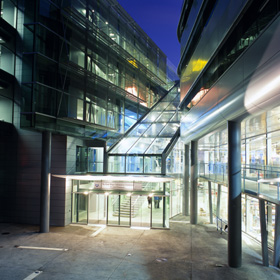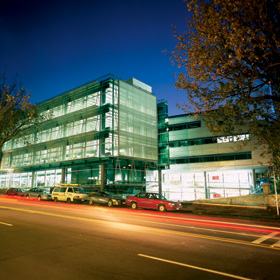Selected Project
Student Amenities
Opened in August 2003, Auckland University’s “Kate Edger Information Commons and Student Amenities Complex” provides space, technology and expertise to support the scholarly use of information resources and act as a focal point for the development of innovative learning support services. In the fast-changing, technology-driven Knowledge Economy, the ways in which students study, access and process information has changed radically. And so have teaching and research. Long gone are the days when catalogue cards, library shelf searches and stackroom forays were the primary route to information, and handwriting the standard format for essays and reports. The University of Auckland is the first of our universities to fully address the significant IT infrastructure issues facing our tertiary institutions, by commissioning the design and construction of a state of the art “Information Commons”. It’s a facility increasingly seen in overseas universities, particularly in the USA, involving the integration of information resources, computer technology, and technical/learning support. In the past, IT facilities tended to be fitted into existing buildings or housed in new buildings on the margins of the campus. Learning spaces, library facilities, and technical support services -- designed for the age of print, and computing before the advent of the Web -- were geographically dispersed, across campuses. The Information Commons turns this approach on its head by effectively merging a computer lab and a library reference room into one. The combination provides a multitude of synergies and opportunities for learning. Here, students can access applications and digital content – 10,000 electronic journals, over 300 bibliographic databases, 5000 e-books and other digital scholarly resources. There are 1300 study spaces, including computer workstations and plug-in stations for laptops, where they can research, discuss, write, edit and print their work without leaving the building. Remote and virtual study can be a lonely business -- to counter this, the building has been designed to encourage social interaction. Discussion areas and meeting rooms allow students to move away from computers to talk about their work. A distinct wing accommodates a range of student amenities, including facilities for student services (Student Learning Centre, Health and Counselling), offices and meeting rooms, cafes, a bookshop and pharmacy. This is connected to the Information Commons by a linking glass atrium and expansive plaza forming a vibrant, light-filled hub for the university.
- Category
- Education
- Location







